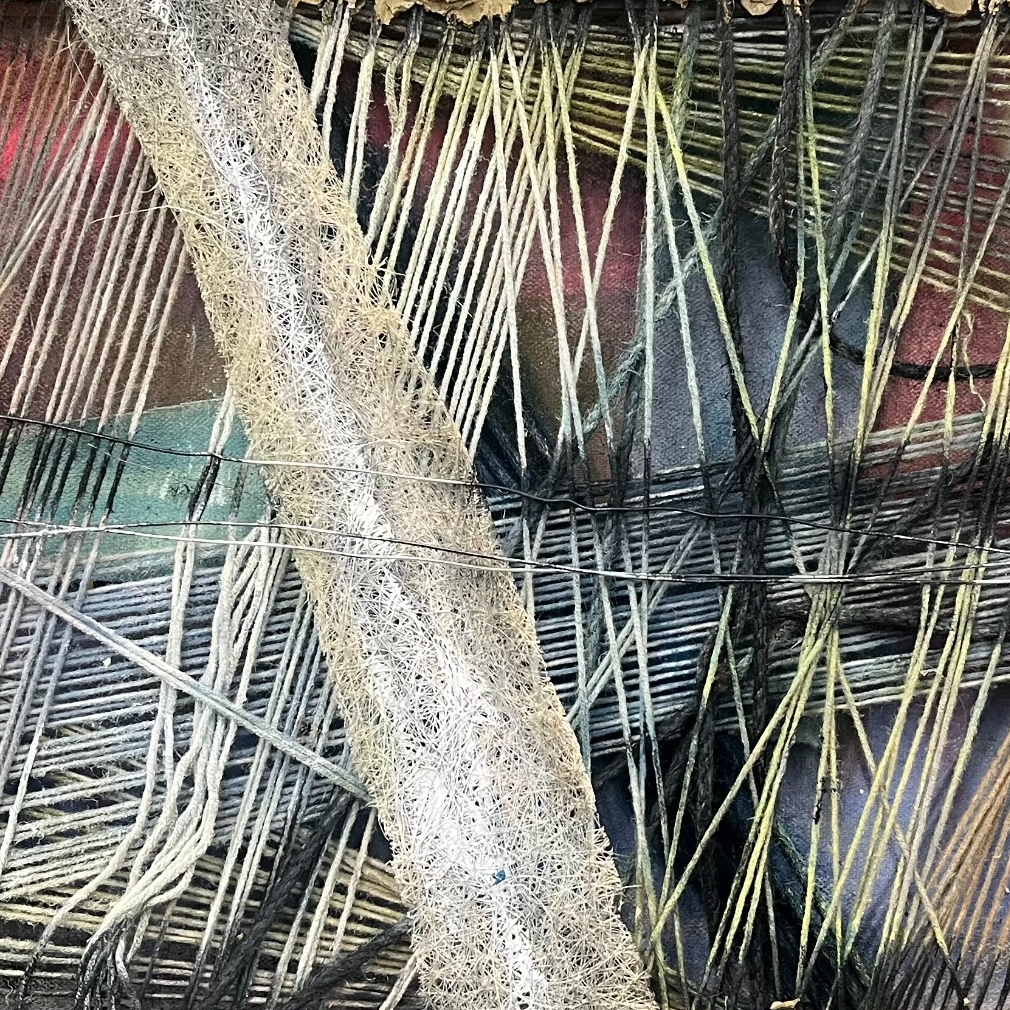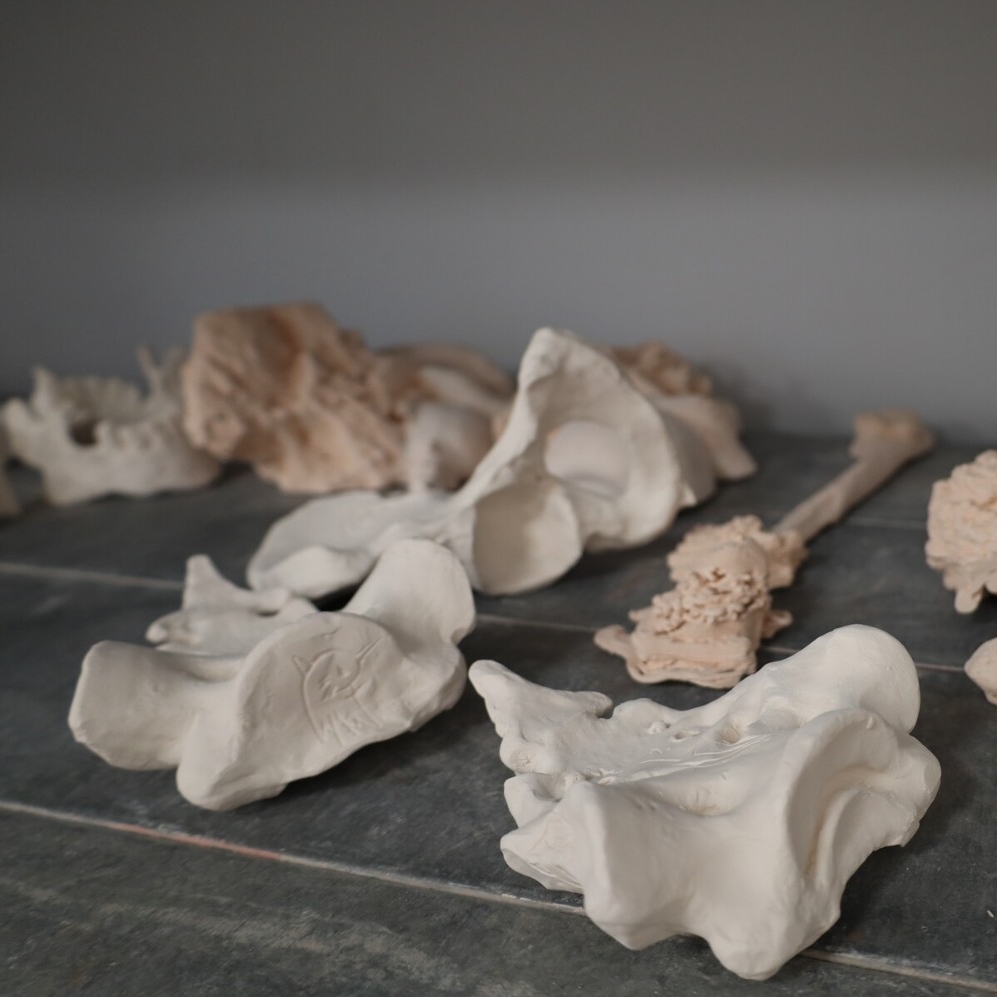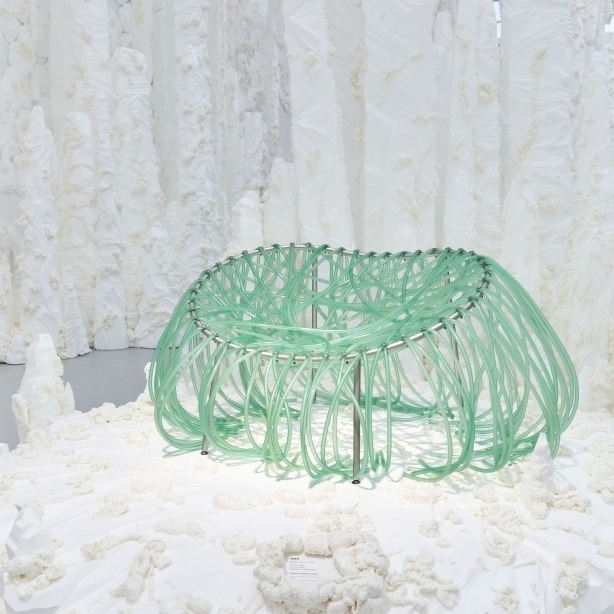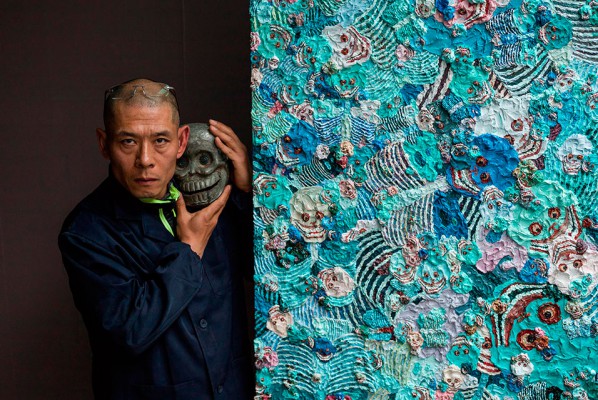
Zhang Huan in his studio. © Zhang Huan studio
Pace London presents Spring Poppy Fields, an exhibition of new works by the Chinese artist Zhang Huan from 25 April to 31 May 2014 at 6 Burlington Gardens. Zhang Huan is one of the most vital, influential and provocative contemporary artists working today. Having explored the full spectrum of media, from performance to photography, installation, sculpture and painting, Zhang Huan’s Spring Poppy Fields oil paintings is the subject of his first exhibition at Pace London.
Spring Poppy Fields features fourteen vividly coloured, oil on linen paintings that have occupied the artist’s practice between 2011 and 2014. Alluding to Buddhist masks and iconography, the series is inspired by Zhang Huan’s extensive travel to Tibet, Nepal, Bhutan and India.Employing an almost pointillist technique, Zhang Huan’s application of the thick pigment performs an optical illusion. From a distance, the canvas metamorphoses into a field of psychedelic colours; the pink, teal, lilac and cornflower blue palette appears to pulsate with energy. Upon closer inspection, the colours separate and the individual faces of the skulls emerge from their abstraction. Seemingly uncontrolled and haphazard, the placement of the skulls on the canvas is misleading.
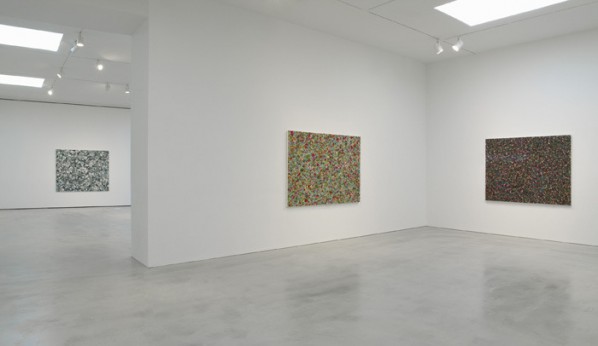
Zhang Huan’s recurring use of skulls stems from the artist’s early exploration of performance inspired by the body and human form. Drawing inspiration from the hallucinatory effects of the poppy’s opiate properties, the use of the skull motif reflects the Tibetan beliefs of endless deaths. In her essay, The Art of Impermanence: Zhang Huan and Tibetan Skulls, Kathryn H. Selig Brown discusses the Tibetan Buddhist beliefs, from which Zhang Huan draws, maintaining that skulls are reflective of the Buddhist cycle of birth, death, rebirth and journey to nirvana.
Becoming a lay Buddhist* near to nine years ago, Zhang Huan has since frequently adopted Buddhist icons and death rituals in his work. In accordance to Tibetan Buddhist philosophy, greed, anger, ignorance, pride and lust are all destructive emotions that will thwart one’s prospects at attaining nirvana. The skull plays an integral role in the destruction of the ego, preventing the temptation of worldly pleasures; in the words of Kathryn H. Selig Brown, “the enemy is the ego and the skull, a tool to smash it.”
Despite Zhang Huan’s heavy reliance upon Tibetan Buddhism, his choice of palette is non-Tibetan and paradoxical in its symbolism. The various colours, representative of “garish consumerism” in these paintings enhance the sinister and dark humoured qualities of the skull. The abrasive tones of the maniacal faces taunt at the darker effects of opium, reminiscent of Lewis Carroll’s Cheshire Cat’s opium-infused inane smile.

In addition, the Spring Poppy Fields paintings will feature ribs overlaying the original skulls. The ribs subtly blend into the canvas as a visual accompaniment to the composition and reference themes of “injuries, accidents, war and violence and disasters” according to Zhang Huan.
An exhibition catalogue is forthcoming with an essay by the curator and writer Elena Geuna. * “Kulapati” or "lay Buddhist" are monks who live at home while obeying the doctrines of the Buddhist religion, as opposed to monks who leave their families and serve their religious beliefs all lifelong in temples.
About the exhibition
Duration: 25 April – 31 May 2014
Opening: Thursday 24 April 2014, 6.30 – 8.30 p.m.
Venue: Pace London
Address: 6 Burlington Gardens, London, W1S 3ET
Courtesy of the artist and Pace London, for further information please visit www.pacegallery.com.



